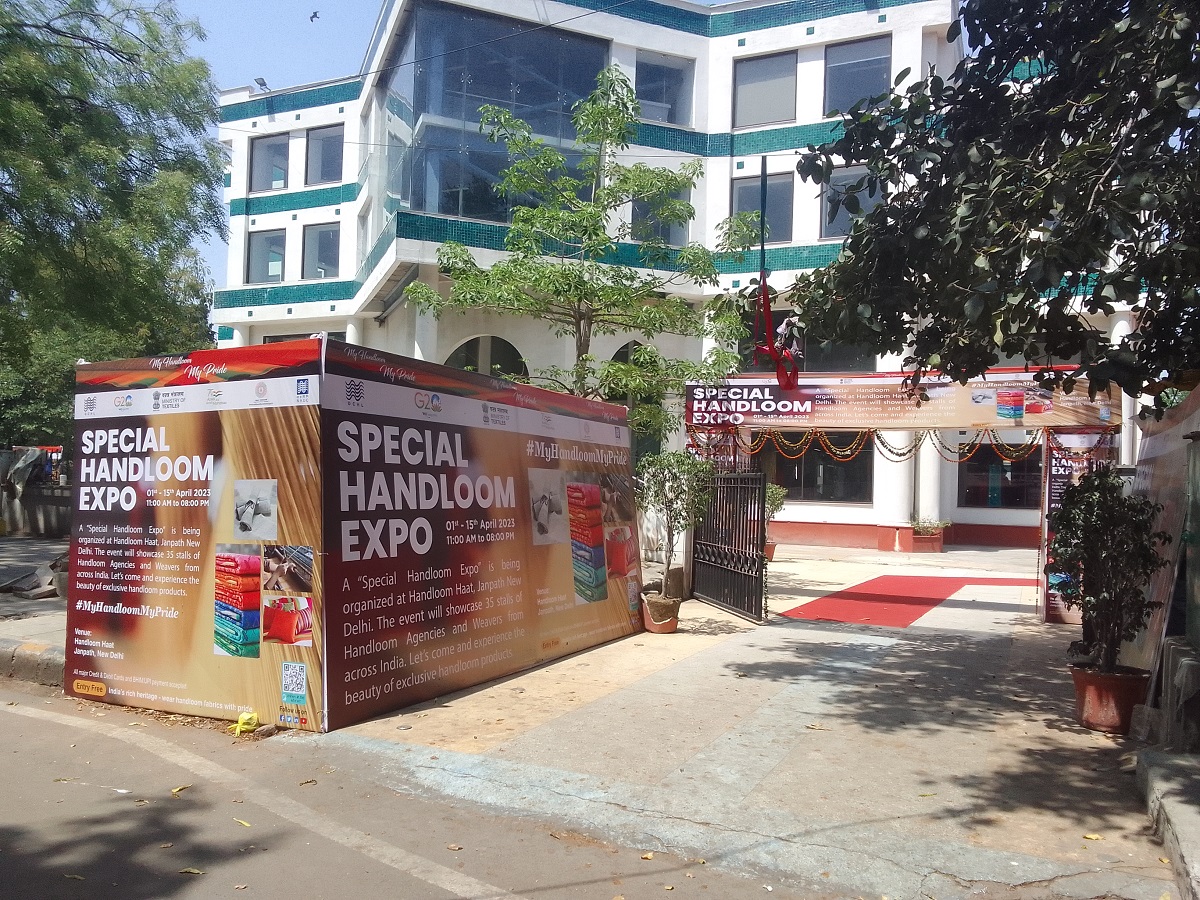Like any other small-scale industry in India, handloom weaving has also entered crisis over the last three years, especially since the Covid-19 lockdown. It got badly mauled during the period leaving weavers facing a future full of uncertainty.
Its impact can clearly be seen at the ongoing ‘National Handloom Expo Exhibition’, which is organised by the National Handloom Development Corporation Limited between April 1 and 15 at Janpath. The exhibition at Handloom Haat is open to the public from 11 am to 8 pm on all seven days and showcases 35 stalls of handloom agencies and weavers from across India.
Yet, the weavers are longing for customers even on the weekends.
Mudassir, 45, who runs a stall of Kashmiri shawls and other Kashmiri handloom products in the expo has to endure long waiting periods for the customers.
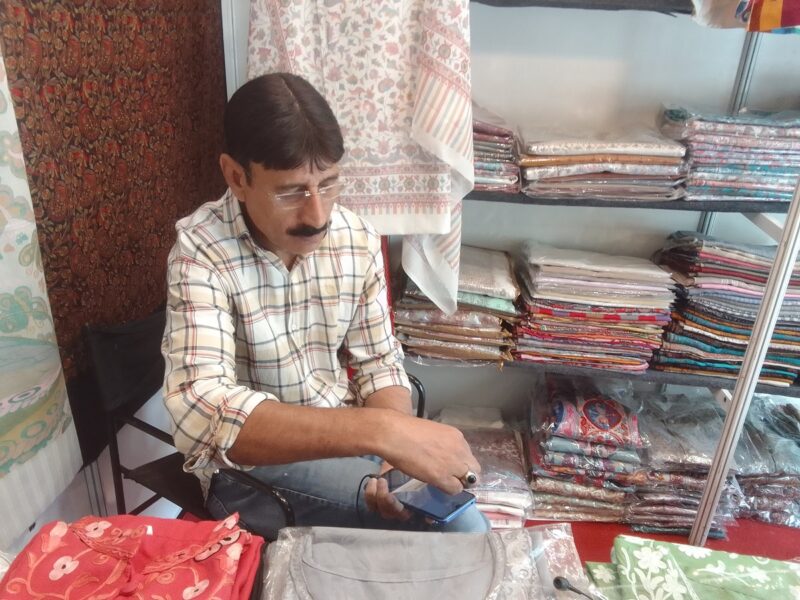
“Bilkul bhi kaam nahi hai (I have no work at all). There are no sales, nothing. Customers are not coming. Before Covid, our business was good but after that, it has gone down and the business is very slow. The main reason is the after-effects of Covid. People have no money to buy,” a worried Mudassir, who hails from Srinagar, told Patriot.
Due to the severe impact of Covid on this industry, most weavers and dealers in handlooms have slipped into crisis with some even shifting to other businesses.
Handicrafts business is the family trade of Mudassir. Earlier, his father and brother were running it and now he has taken over. He has been involved in it from a young age.
“The situation was never like this before. The business was very good till 2010. We also sent our products abroad. We exported our shawls to Europe and other countries like Singapore, Italy and United Kingdom. But abhi to situation totally kharaab hai (But now the situation is completely bad). The government should do something [to revive] this business,” concluded Mudassir.
The situation can best be judged by the fact that the owners shut shop much before the official closing time, which is 8 pm.
Aslam Ansari, 47, is one of them.
“There are no customers, so we close our shop at around 7 pm,” said the native of Uttar Pradesh’s Baghpat District to Patriot.
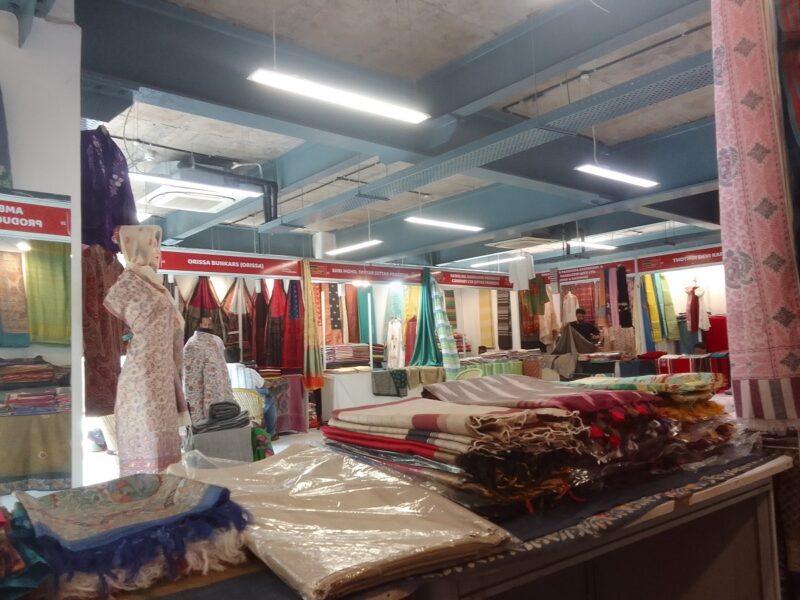
He explained, “Earlier, the business of handlooms was not just good but very good. Even our city, Khekra, was famous abroad for handloom products. But now the business is miserable there. At one point in time in Khekra, every household was involved in handicrafts business but now only 10 to 15 people remain in this business. Otherwise, everyone else has moved on. Not only the Ansaris, but other communities like Jats and Yadavs were also involved in handicrafts work. There is no demand for our products now. Then why should we produce?”
Aslam pointed out that they used to export the product earlier but since there is lack of demand, they don’t do it anymore. The only way for them to run the business is to sell by themselves.
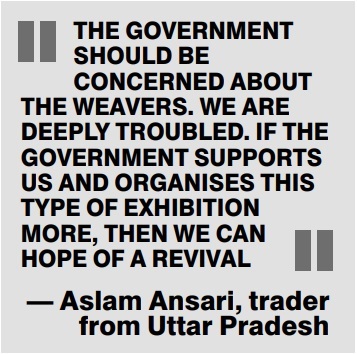 The household-based handloom industry, which comes under micro industries sector, has been proper and money-generating occupation since centuries.
The household-based handloom industry, which comes under micro industries sector, has been proper and money-generating occupation since centuries.
The Union government data also shows the miserable condition of the MSME (Micro, Small and Medium Enterprises) sector. In a question raised in the Rajya Sabha in February, the government responded that in the financial year 2022-23, over 10,000 such enterprises (MSME) shut down. This is the highest in the last four years and enough to raise concerns over the sector’s health.
Ansari said further, “The main reason for this fall is the halt in exports. Seven to eight years ago, exports from Khekra stopped, so we and the labourers involved in this business were badly affected. If there is no work, what will the labourer do? We also had to shut our handlooms business but restarted it three years ago. Now, we produce and sell by ourselves. Some shopkeepers there started mixing sub-standard material. The introduction of power-looms is the other reason for the fall.”
He added, “The government should be concerned about the weavers. We are deeply troubled. If the government supports us in future and organises this type of exhibition more, then we can hope of a revival. Otherwise, we will be forced to shut down and think about something else.”
The handloom sector in India employs most Indians after agriculture. The industry generates employment for both skilled and unskilled workers. Government data suggests that the industry employs about 4.5 crore people directly and another six crore through allied sectors. Women make up the largest workforce, accounting for approximately 60% to 70% of the total manpower.
Inakali is one of them. The 42-year-old is participating in the expo from the Northeast state of Nagaland. Her family members in her native place are also involved in handicraft business. Her stall lies at the entry gate of the expo.
She told Patriot, “I am happy to come here. Although the footfall is low, the government provides us space for expo and gives us money, which is enough [for me]. Because Nagaland is cold and we produce only winter clothes, the sales here nowadays are not good as the summer has set in.”
With no customer visiting his owner’s stall, Bihar’s Bajrangi Kumar was busy playing a game on his mobile. He was selling silk and cotton sarees, dupatta at the stall. His owner has returned to his hometown of Bhagalpur in Bihar after setting up the stall.
“Kahaan bikri-batta hota hai, aaj to boni bhi nahi hua (Where are the sales taking place. Even today, we couldn’t sell a product worth even a single rupee),” Bajrangi told Patriot at around 3 pm.
“In the last 10 days (since the start of the expo), we have sold products worth only around Rs 10,000.”
The handlooms and handicrafts sector is a symbol of our country’s rich and varied cultural heritage. Therefore, given the present situation of the handloom weavers, this industry needs a big push for its revival.
Rustam Sohrab’s stall is as quiet as that of the others. The 47-year-old, a Rashtrapati Award winner for his handicrafts work in 2008, was waiting for customers with wife Rizwana Khatoon at his carpet shop at the expo.
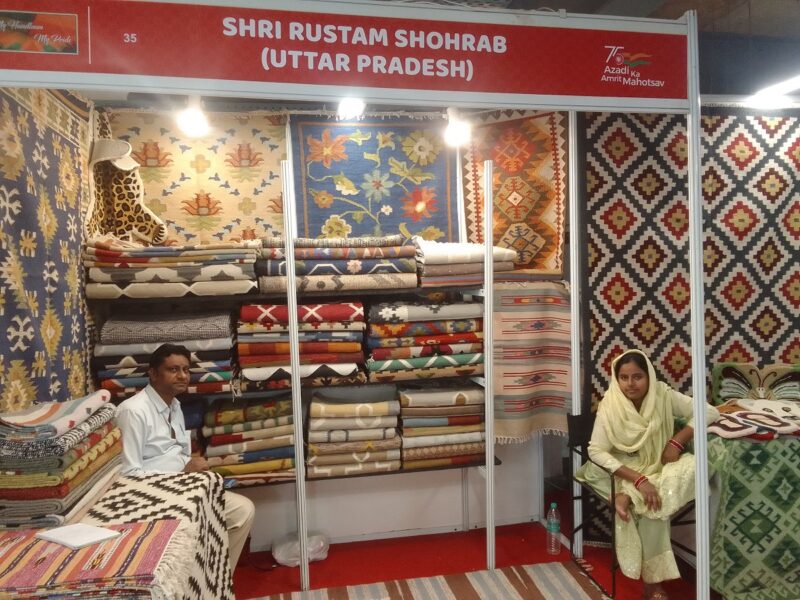
“The condition of this business has gotten worse in the last 4-5 years. It was never like this before. Earlier, 40-50 and sometimes 100 workers used to work in my shop. The number has fallen to 10-12 now. The business has suffered badly.”
Originally from Mirzapur, Uttar Pradesh, he inherited his ancestors’ handicrafts business.
“My wife and I won the ‘Rashtrapati Award’ in 2008 for the jari work. The then textile minister Dayanidhi Maran gave us the award at the Ashoka Hotel in Delhi. Mirzapur, Bhadohi were so famous for dari-kaalin (carpet) work. It used to be a hub at one point in time. Earlier, we too would supply our products all over India. But now the situation is not good. We are barely surviving, managing two square meals a day and sending our kids to school. Haven’t thought of anything beyond that.”

